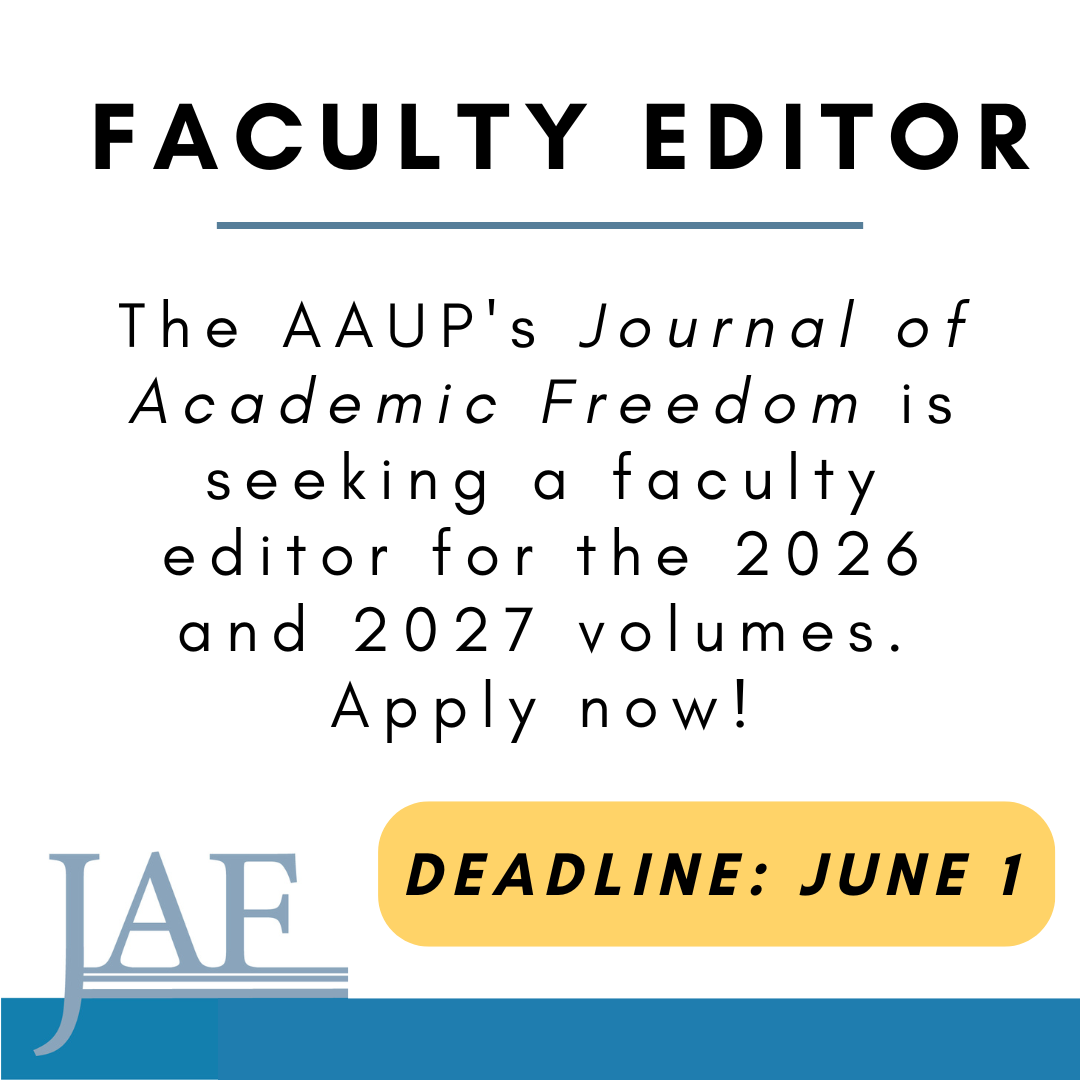- About
- Programs
- Issues
- Academic Freedom
- Political Attacks on Higher Education
- Resources on Collective Bargaining
- Shared Governance
- Campus Protests
- Faculty Compensation
- Racial Justice
- Diversity in Higher Ed
- Financial Crisis
- Privatization and OPMs
- Contingent Faculty Positions
- Tenure
- Workplace Issues
- Gender and Sexuality in Higher Ed
- Targeted Harassment
- Intellectual Property & Copyright
- Civility
- The Family and Medical Leave Act
- Pregnancy in the Academy
- Publications
- Data
- News
- Membership
- Chapters
Legal Watch: Academic Freedom and Guns on Campus
The AAUP’s recent joint amicus brief opposing the mandate that guns be permitted in college classrooms in Texas highlights a growing threat to faculty and academic freedom. The problems associated with students carrying weapons, concealed or otherwise, are manifest. College classrooms are places for debate and inquiry: they are places where the seminal questions of our day are discussed, where fundamental truths are examined and often challenged, and where controversial ideas are confronted. Students must be free to express their opinions without fear. The presence of weapons not only inhibits the exchange of ideas but also may compel faculty to avoid even raising controversial topics, thereby interfering with the freedom to teach. The higher education community understands that the presence of guns in the classroom damages the educational environment, a view buttressed by significant social research.
Allowing weapons in the classroom is not just bad policy; it violates the fundamental principles of academic freedom. The Supreme Court has recognized that academic freedom particularly protects the ability of faculty and students to engage in vigorous classroom discussion. As the Court held in Keyishian v. Board of Regents (1967), “the classroom is peculiarly the ‘marketplace of ideas,’” and for that reason, academic freedom is “a special concern of the First Amendment, which does not tolerate laws that cast a pall of orthodoxy over the classroom.” In the 1952 case Wieman v. Updegraff, the Court noted that the academic environment itself plays a vital role in cultivating such critical inquiry: “Teachers must fulfill their function by precept and practice, by the very atmosphere which they generate; they must be exemplars of open-mindedness and free inquiry. They cannot carry out their noble task if the conditions for the practice of a responsible and critical mind are denied to them.”
Recognizing that guns in the classroom inhibit the free exchange of ideas, colleges and universities, public and private alike, have overwhelmingly opted to prohibit weapons in the classroom when they have been allowed to do so. Such prohibitions include an 1825 policy passed by the Board of Visitors of the University of Virginia, with Thomas Jefferson and James Madison present, which mandated that no student shall “keep or use weapons or arms of any kind” on campus. Statutory prohibitions on guns on campus exist in over a dozen states.
Nonetheless, colleges and universities have faced a spate of recent laws mandating that guns be allowed on campus. The AAUP and the higher education community in general have staunchly opposed such “campus carry” laws. In 2008, the annual meeting of the AAUP passed a resolution opposing legislative initiatives to allow guns on campus. In 2015, the AAUP, together with by the American Federation of Teachers, the Association of American Colleges and Universities, and the Association of Governing Boards of Universities and Colleges, issued a “Joint Statement Opposing ‘Campus Carry’ Laws” that explained, “College campuses are marketplaces of ideas, and a rigorous academic exchange of ideas may be chilled by the presence of weapons. Students and faculty members will not be comfortable discussing controversial subjects if they think there might be a gun in the room.”
The AAUP’s recent amicus brief challenges a 2015 Texas law that tramples the consensus of the academic community and undermines academic freedom. The Texas legislature passed the campus carry law, which applies to all public institutions in the state, despite virtually unanimous opposition from both faculty and administrators. Following passage of the law, the University of Texas at Austin convened a Campus Carry Policy Working Group, which noted in its final report that faculty (and many students) held a “deep-seated fear that the knowledge that one or more students might be carrying a concealed weapon would have a substantial chilling effect on class discussion.” Finally, in delivering UT Austin’s proposed campus carry policy to the chancellor, the university president reiterated that “the presence of handguns at an institution of higher learning is contrary to our mission of education and research, which is based on inquiry, free speech, and debate.”
For almost two centuries, the higher education community has recognized that the presence of guns in the classroom inhibits the “practice of a responsible and critical mind.” Compelling faculty members to allow guns in the classroom robs them of the ability to ensure that the classroom remains the true and open marketplace of ideas that is at the core of academic freedom—and of learning itself.
Aaron Nisenson is senior counsel at the AAUP.




